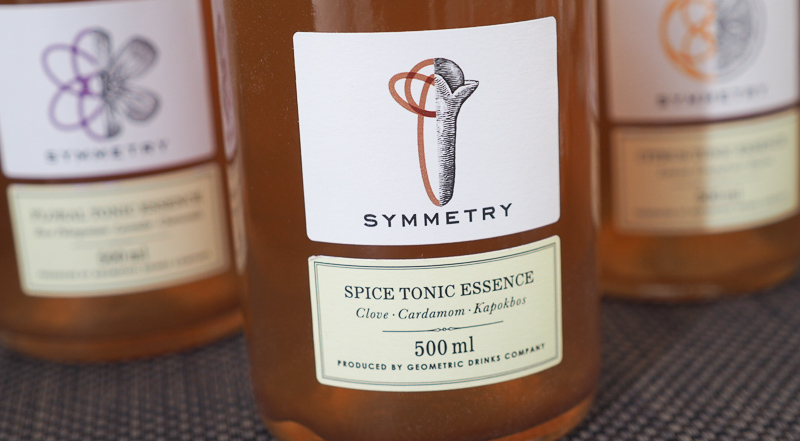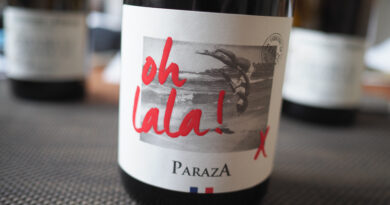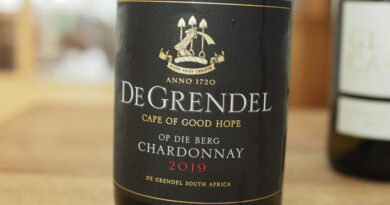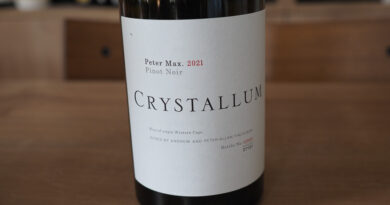Symmetry: amazing South African tonic essences from Tista Cristini
Tista Cristini is the dude behind Symmetry Tonic Essences. He left South Africa for 15 years, and spent a decade in Chablis and Champagne, before returning home to start his own business. I caught up with him on a Zoom chat to taste through these remarkable drinks.
What was the inspiration for Symmetry?
‘The inspiration for this was boredom! I wanted to be a winemaker when I was young, I studied chemistry, and I realized that without good vineyards this was going to be boring,’ says Tista. ‘So I went to business school in France and ended up working in wine. When I was in Champagne with two good friends, Raphael Bereche and Peter Liem, we used to make a beer together. We would bottle it in Champagne bottles. This was my creative outlet. Then when I moved back to Cape Town in 2013, craft beer was totally inundating the drinks scene. I wasn’t going to make beer again, but I’ve always been passionate about perfumes. I started distilling as a hobby. I got great Sauvignon from Darling and after fermentation had finished and before sulfites were added I’d take 1000 litres and distill it to make a brandy base, which I transformed into gin. When I started bottling the gin, we started making tonic. We needed an African tonic. I wanted something that reflected us.’
Tista thinks it’s important to use local botanics.
‘If you look at wine, for instance, we try to express the notion of terroir, but we are taking a European plant and plugging it into our soil. It is little bit like trying to tell South Africa’s story with one language. I am trying to layer as many different sides of our culture – our natural culture and our historical culture – on top of each other, to try and get something less filtered to show what the western Cape has to offer.’
‘The idea for Symmetry came from reflecting our natural environment brings to us, our fynbos. This is the word we use for our floral kingdom. It is the most concentrated floral kingdom in the world. We have 16 000 indigenous plants in the western Cape, which is more than the whole of the Amazon rainforest. And it’s taking account of the various historical influences we have had.’
‘We have 11 official languages. I like the idea of language. We are a culture with many languages and colours. We only have ethnic minorities in South Africa: we are a cluster of minorities.’
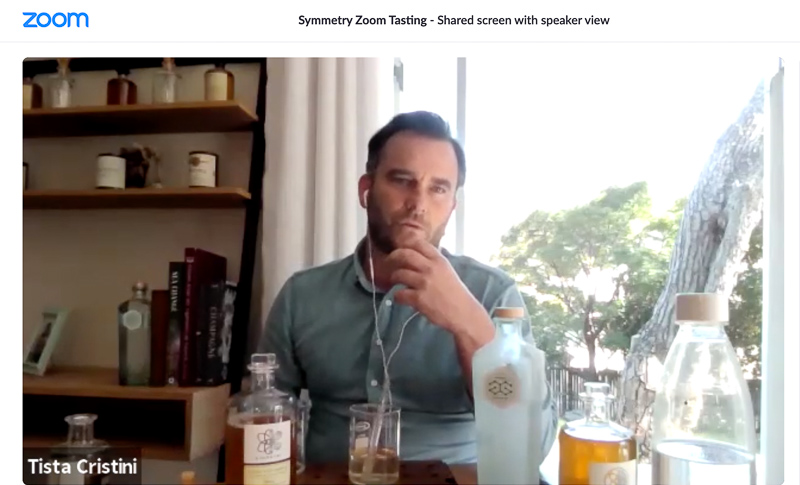
One of the keys to these drinks is the method used to extract flavour from the botanicals.
‘I started by trying to extract flavour by boiling water, through distillation and through reverse osmosis. It was very difficult to get the complexity out of the plants I was using. So I ended up building a vacuum macerator. The idea is to brew like you would brew a tea, without denaturing any of the flavours. When I started I wanted to use natural flavourings. I needed to infuse the actual plants to get all the complexity. Texture is an important part of the drinks we like to drink, and it also allows us to put less sugar in what we are making. Most soft drinks have sugar as the backbone, not just for the sweetness but also the texture and structure of the drink.’
Tista has designed a system that allows him to boil water to use in extraction at low temperatures.
‘I built these tanks where I put my fresh, whole botanical material. Then I macerate at 40 C in a vacuum so the water boils, but because I don’t have high temperatures I’m not denaturing any flavours. This is particularly important with citrus peels, or anything floral or with chlorophyll. It doesn’t matter for spices or things like ginger or spices, but for all the more fragile things it makes an insane difference.’
And the tonics come as concentrates in 500 ml bottles, for important reasons.
‘I make them as concentrates because I can save a lot on packaging. I hate the idea of single serve. In South Africa I work with a lot of top Safaris. One group was doing 25 000 200 ml cans a year, and with symmetry they have a glass bottle crusher so it doesn’t impact their municipal waste. It also allowed me not to put preservatives in here. There are no preservatives, no sodium benzoate, no sulfites. Once I have removed all the solid materials I run them through a flash pasteurizer. I hot fill the bottles at 70 C. That’s why I use a Vino-Lok closure. It can resist heat.’
All three essences have a few common ingredients.
‘All have cinchona bark which comes from DRC. This is one of the main plants that colours all the tonics. It doesn’t just bring quinine. It bring a lot of cigar box and cedar wood bass notes. The other plant in all three are fresh lemongrass, fresh lemon peel and fresh ginger. These give texture and mouthfeel, and a savoury midpalate. The top notes are displayed on the front labels.’
And they are not too sweet.
‘If you dilute it 1:3, it’s 3 g sugar per 100 g, which is about the same of fresh lemon juice.’
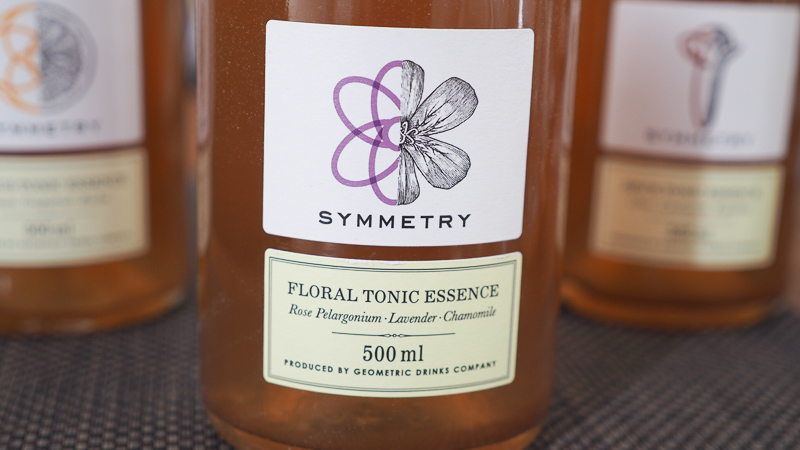
Floral Tonic Essence
Rose Pelargonium/lavender/chamomile
Very aromatic and expressive on the nose. Floral and fruity. Lemon marmalade, some grape, some peach, some lavender exoticism, with a bit of spice and tannic grip, as well as some fine earthy hints. It’s really exotic and intense with a slight bitterness. It’s not overly sweet and the finish is really long. Lovely bite here.
Spice Tonic Essence
Clove/Cardamon/Kapbokbos
This has a lovely woody nose with spice and earth. It is totally savoury. The palate is complex with lots of wood and spice notes, with some citrus brightness on the finish. This is a take on the Cape Malay heritage, with clove and cardamon. It’s nicely bitter, but has a hint of sweetness too. Kapbokbos is the indigenous element that grows like a weed, and looks like Rosemary. In the Karoo lamb is raised and they eat this, so it gives Karoo lamb its distinctive flavour. It has camphor/sage/rosemary flavours and they feature here. Finishes warm and exotic, but also bright.
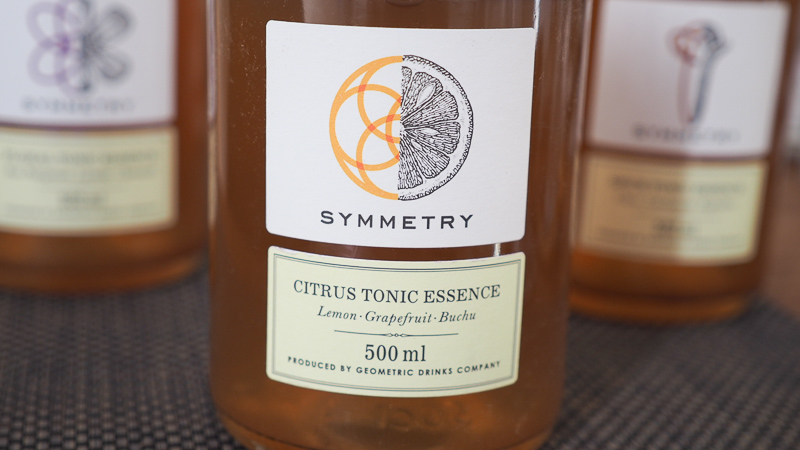
Citrus Tonic Essence
Lemon/grapefruit/buchu
Beautifully exotic with thick-cut marmalade, some grapefruit and some spicy notes on the nose. The palate is bright and spicy, with layered citrus and citrus peel notes, and a nice grapefruit pith bitterness. So lively and pungent with amazing complexity. Grapefruit peel, lemon peel and lime peel are the key here mixed with semi-dried buchu leef from the Cederberg. It’s an extremely pungent leaf, and it’s actually part of the citrus family, with an oily fragrance to the leaf.
Mezcal works well with these, Tista says.
For using these in gin and tonics, Tista recommends:
Floral for juniper-recessive gins such as Hendriks
Spice for classic London dry gins with lots of juniper
Citrus for the perfumed gins that are overly aromatic
I was really impressed by them. These are serious alternatives to alcoholic drinks.
Website: Geometric Drinks Company
UK agent: Tiger Vines

